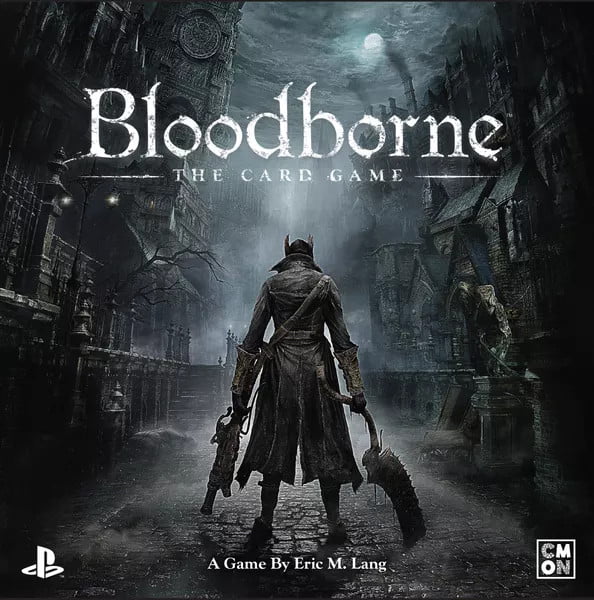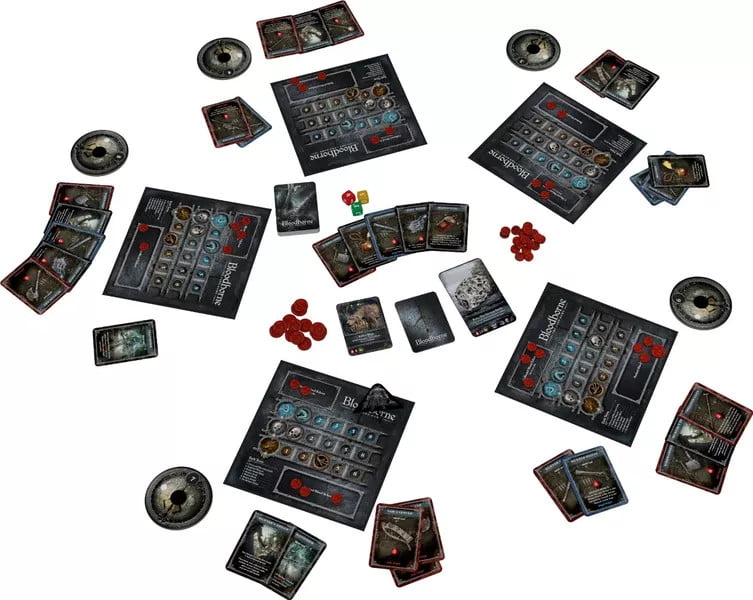Hey, do you remember Bloodborne? That critically acclaimed internationally successful videogame made by longstandingly successful company From Soft that I looked at and gave you the useful insight that it wasn’t actually that good and it serves as a symbol of how we are sycophantic towards games for idiotic fears of hurting those games’ feelings? That game that was a solid 7/10 but only the reviews of the people who have sunk all the sunk costs count, meaning it’s elevated to special uncriticisable place in the pantheon of videogames as somehow being ‘near perfect’ despite being incredibly janky and failure-prone? The game that has an aesthetic I love, but which disappointed me immensely?
Yeah, that, it’s back, and in card game form!

In Bloodborne, the card game, you take on the role of a hunter. Well, we say you take on the role of a hunter. Okay, you do, you take on the roll of a hunter. You and all your friends flip a card to see what monster you’re going to fight, you decide what attack you’re going to commit, and then everyone reveals them at the same time, you roll some dice to see how much damage the monster will do, and if the monster dies, the person who scored the last hit gets that monster’s card as a prize, and… that is it.
There’s some finer details to it, but that is basically it. And you might wonder: Well why wouldn’t you just use your best attacks, all the time, like the rest of the players? Is there a limit on what’s in your hand? No, you see, because you are trying to score the last hit, and any player may instead fuck off to the hunter’s dream and leave you to face the damage, without contributing to the attack. And there’s the twist! You need to cooperate to defeat enemies, because otherwise you all lose, but there is a player who is going to win when the monsters get defeated, and you have these public player boards that show what different types of monster you’re going to value more or less highly.

It’s not that at any point we’re talking about a bad game. If you strip away the flavour of the game, if you remove the paratextual elements of the advertising and the way it was promoted, and look down at the mechanical system of the game in its purest sense, what you are left with is a very interesting mathematical puzzle. It’s a kind of prisoner’s dilemma where your choices are further diminished by the potential for what’s in your hand, or what you may or may not be ready to commit to a particular play.
The game isn’t bad.
The game is absolutely not ‘semi-cooperative,’ which is a term I’m getting more and more annoyed by. Just say it’s cooperative or it’s not! Say you can provide a cooperative game rule set if you must! Semi-cooperative is competitive, in tension, and that’s okay! But semi-cooperative doesn’t appeal to the people who like cooperative games, it just means that they sign up for a cooperative experience and then get short shifted by finding that no, they’re not working with their friends.
It’s disappointing. It’s disappointing because the monsters of Bloodborne are so steeped in character and behaviour; there’s a strangeness to all of them, different instincts and behaviours that the game signals with how they move, the runes created by their attacks. It’s true for the weapons and equipment, too. Changing your weapon from moment to moment gives an exciting spark of change, it has a satisfying chonk. This game comes with a little cardboard hunter that stands up in front of you… but it’s just a first player token to mark where the rounds start and end.
That’s what’s missing from this game. A way that its theme and its mechanics actually do something with the rich flavour of the world it’s trying to represent. The way that this is not a card game that looks like Bloodborne, and is instead, a Bloodborne card game.
Images supplied by publisher, archived on Boardgamegeek.